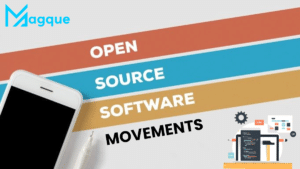In today’s fast-paced business environment, effective customer relationship management (CRM) is crucial for the success of marketing and sales teams. HubSpot CRM has emerged as a leading solution, offering a comprehensive suite of tools designed to streamline operations, enhance customer interactions, and drive growth. In this detailed review, we’ll explore the features, benefits, pricing, and potential drawbacks of HubSpot CRM to help you determine if it’s the right fit for your organization.
Overview of HubSpot CRM
HubSpot CRM is an all-in-one platform that integrates marketing, sales, customer service, content management, and operations. Founded in 2006, HubSpot has consistently evolved to meet the changing needs of businesses, focusing on attracting visitors, converting leads, and delighting customers. The platform is renowned for its user-friendly interface, scalability, and a robust free plan that caters to startups and small businesses.
Key Features
Q1. Contact and Lead Management
HubSpot CRM allows businesses to create and manage detailed contact and company records. Users can store up to 1 million contacts even on the free plan, ensuring ample space for growing businesses. The platform automatically records customer interactions, providing a comprehensive view of each lead’s journey. This centralized system enables teams to track engagements, assign tasks, and schedule follow-ups efficiently.HubSpot
Q2. Sales Pipeline Management
The CRM offers customizable sales pipelines with a visual, drag-and-drop interface. Teams can tailor each stage to align with their sales process, assign probabilities, and monitor deal progress in real-time. This flexibility ensures that the pipeline adapts to the unique workflows of different organizations, enhancing deal tracking and forecasting accuracy.CRM.org
Q3. Email Tracking and Automation
HubSpot CRM provides robust email marketing tools, including automation, tracking, and personalized templates. Users receive notifications when prospects open emails or click on links, enabling timely and informed follow-ups. The automation feature allows for the creation of targeted email sequences, nurturing leads through the sales funnel without manual intervention.HubSpot
Q4. Marketing Automation
The platform’s marketing automation capabilities empower businesses to design and execute campaigns across multiple channels. Features include landing page creation, form automation, social media integration, and A/B testing. These tools help in capturing leads, segmenting audiences, and delivering personalized content, thereby enhancing engagement and conversion rates.Forbes
Q5. Reporting and Analytics
HubSpot CRM offers comprehensive reporting dashboards that provide insights into sales performance, marketing campaign effectiveness, and customer service metrics. Users can customize reports to track key performance indicators (KPIs) and make data-driven decisions. The analytics tools are designed to be intuitive, allowing teams to visualize data trends and measure return on investment (ROI) effectively.HubSpot
Q6. Integration Capabilities
With over 1,500 integrations, HubSpot CRM seamlessly connects with various third-party applications, including email platforms, social media tools, and customer support systems. This extensive integration ecosystem ensures that businesses can unify their tech stack, leading to streamlined operations and improved data consistency across platforms.Email Vendor Selection
Pricing Plans
HubSpot CRM offers a range of pricing plans to accommodate businesses of all sizes:
-
Free Plan: Includes basic CRM functionalities such as contact management, email tracking, and limited marketing tools. Suitable for startups and small businesses.
-
Starter Plan: Starting at $20 per user per month, this plan adds essential features like email automation, landing pages, and enhanced reporting.
-
Professional Plan: Priced at $500 per month (billed annually), it offers advanced marketing automation, A/B testing, and comprehensive analytics.
-
Enterprise Plan: At $1,200 per month (billed annually), this plan provides enterprise-level features, including custom reporting, predictive lead scoring, and advanced user roles.
It’s important to note that pricing may vary based on the number of users and additional features required. For the most accurate and up-to-date pricing information, visit HubSpot’s official pricing page.HubSpot
Pros and Cons
Pros
-
User-Friendly Interface: HubSpot CRM is designed with an intuitive interface, making it accessible for users with varying technical expertise.
-
Comprehensive Free Plan: The free tier offers a wide array of features, providing significant value without financial commitment.
-
Scalability: The platform grows with your business, offering advanced tools and integrations as your needs evolve.
-
Robust Integration Ecosystem: With numerous integrations, HubSpot ensures seamless connectivity with existing tools and systems.
Cons
-
Cost of Advanced Features: While the free plan is generous, higher-tier plans can be expensive, especially for small businesses.
-
Learning Curve for Advanced Tools: Some users may find the advanced features complex, requiring time and training to utilize effectively.
-
Customization Limitations: Certain customization options may be limited, which could be a drawback for businesses with specific requirements.
Recent Developments
As of November 2024, HubSpot has been enhancing its platform through strategic acquisitions and the integration of artificial intelligence (AI) capabilities. The introduction of “Breeze,” an AI engine, powers various automation tools, including customer engagement scoring and AI-assisted reporting. These advancements aim to provide users with more intelligent and efficient tools to drive business growth.Investors
Conclusion
HubSpot CRM stands out as a versatile and powerful platform for marketing and sales teams. Its comprehensive feature set. And be sure to explore Magque, your go-to source for the latest and most intriguing updates in informative tips & reviews!













